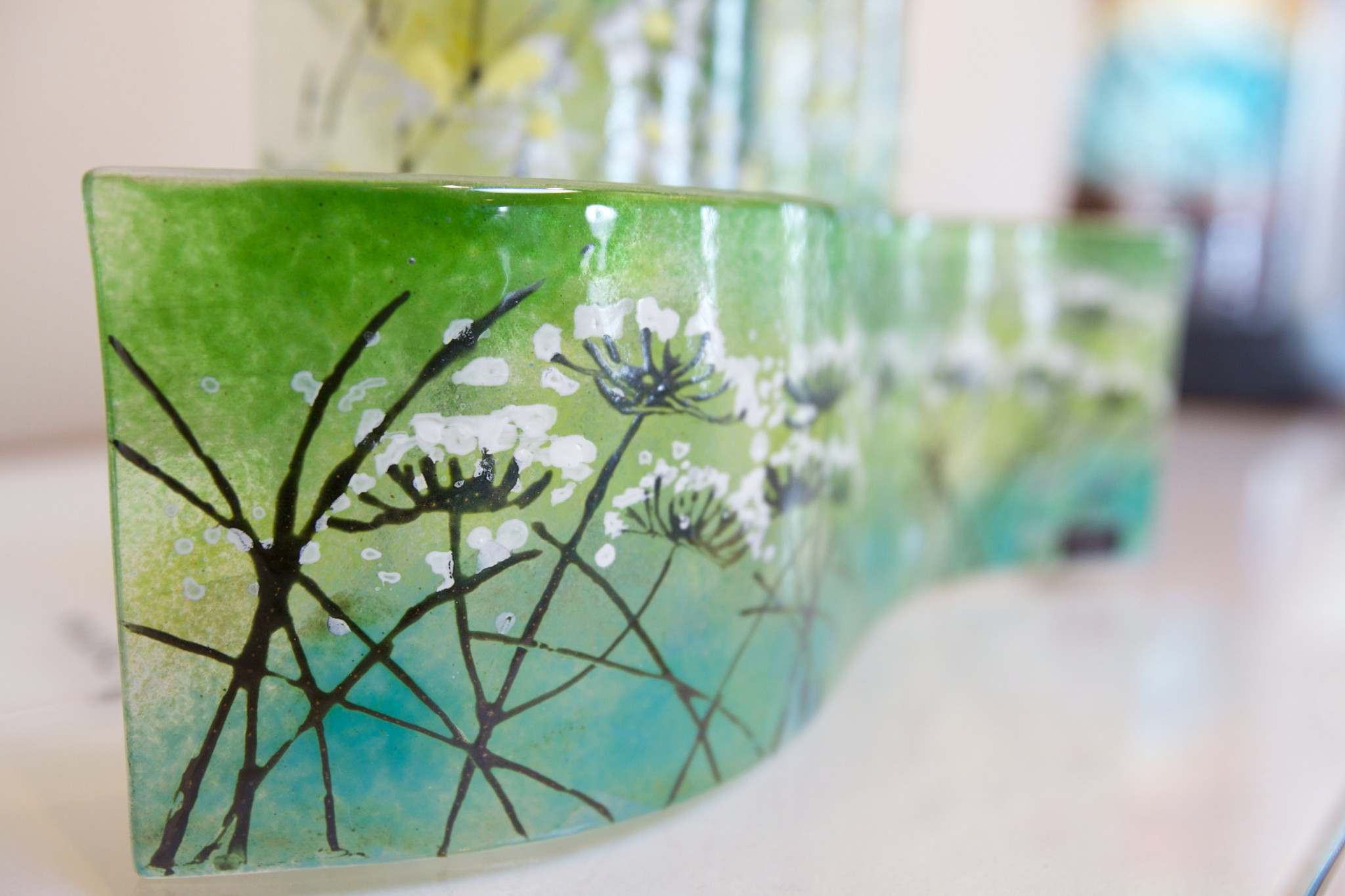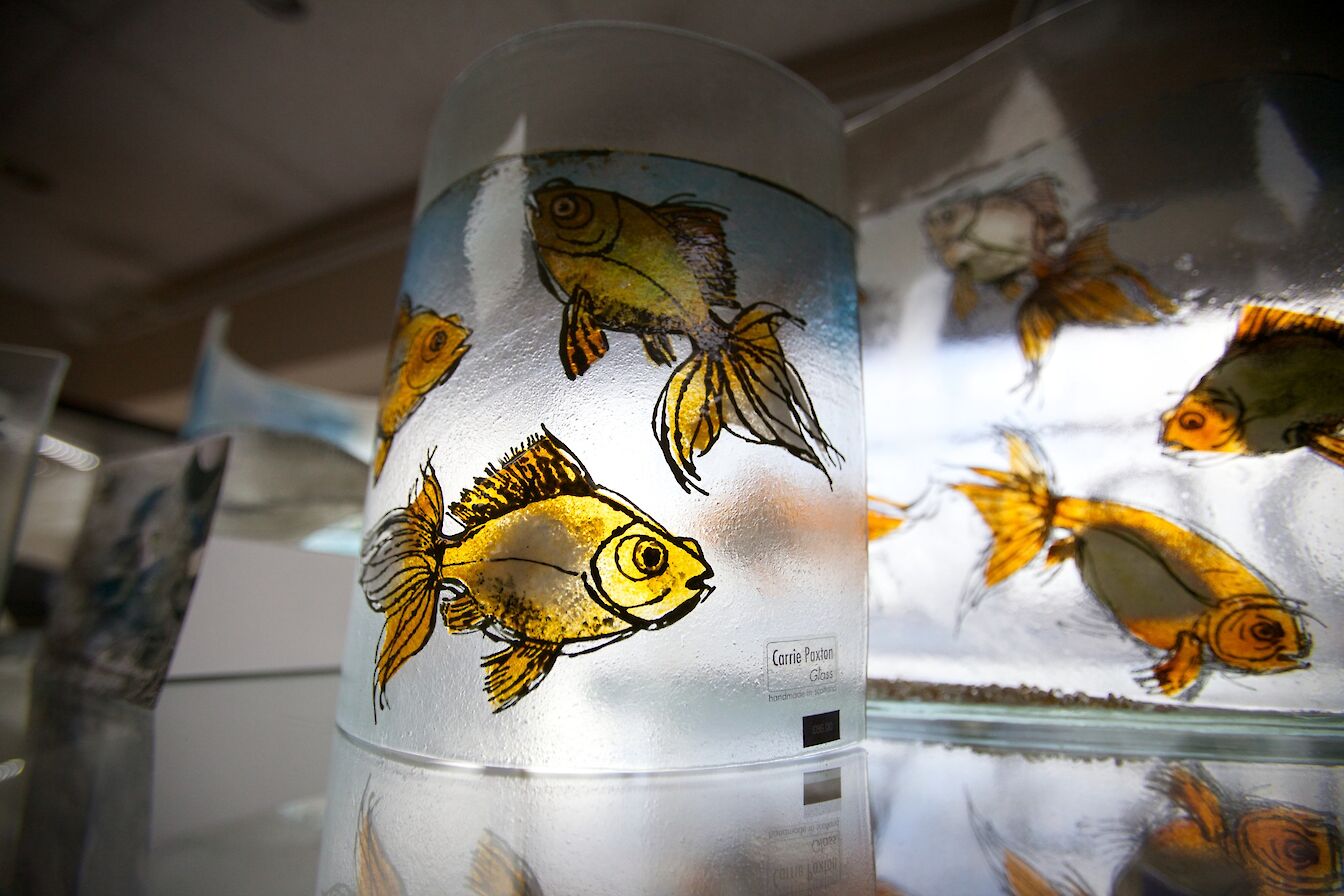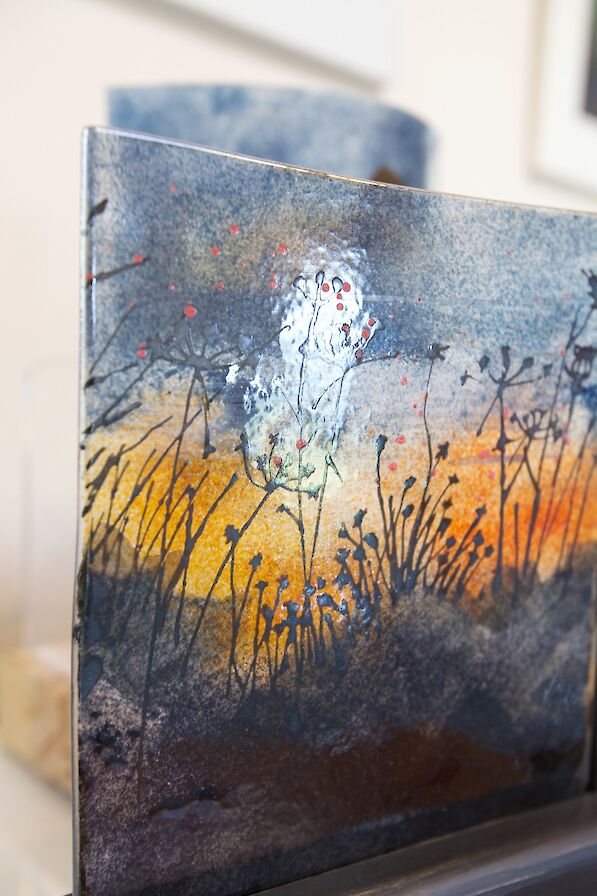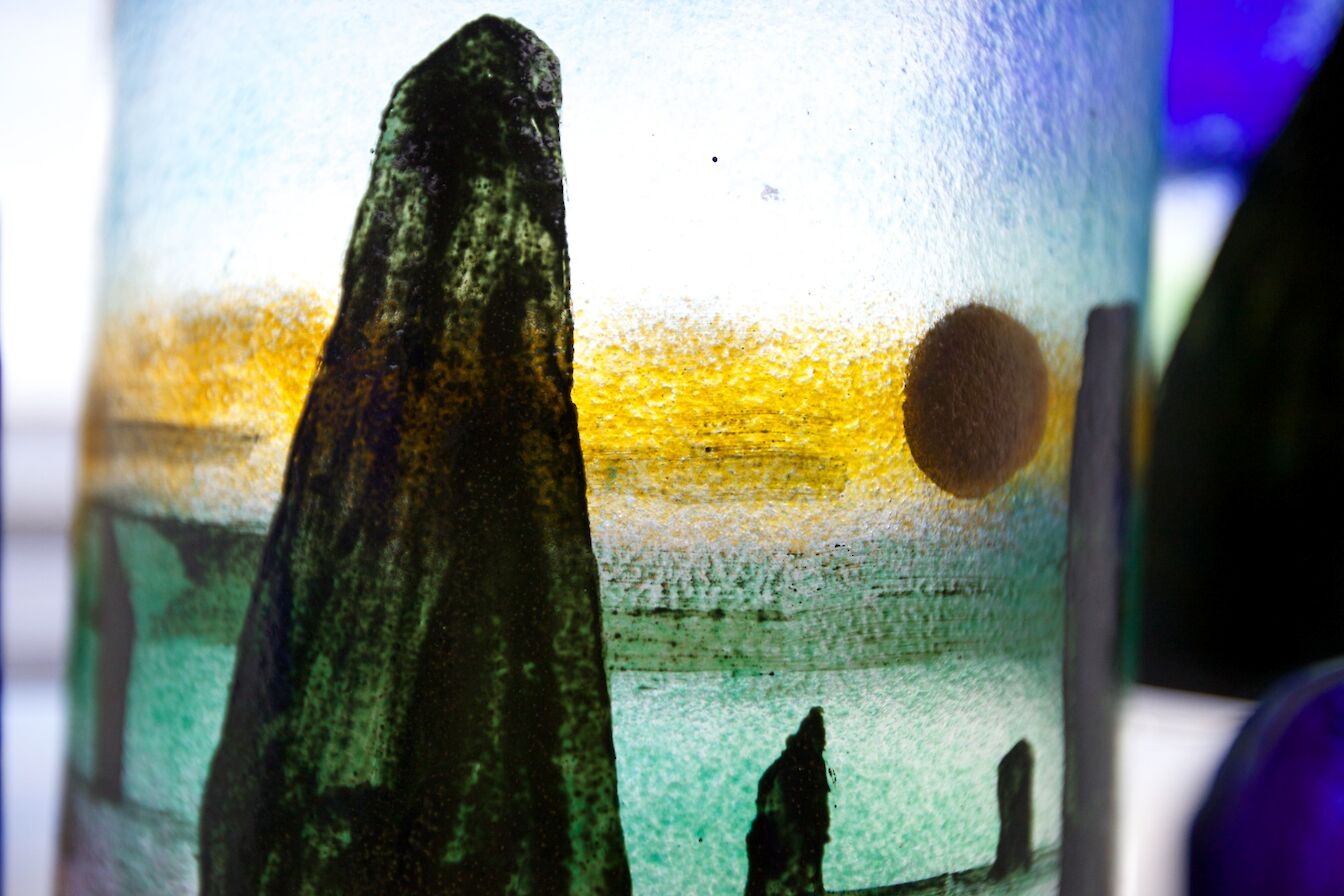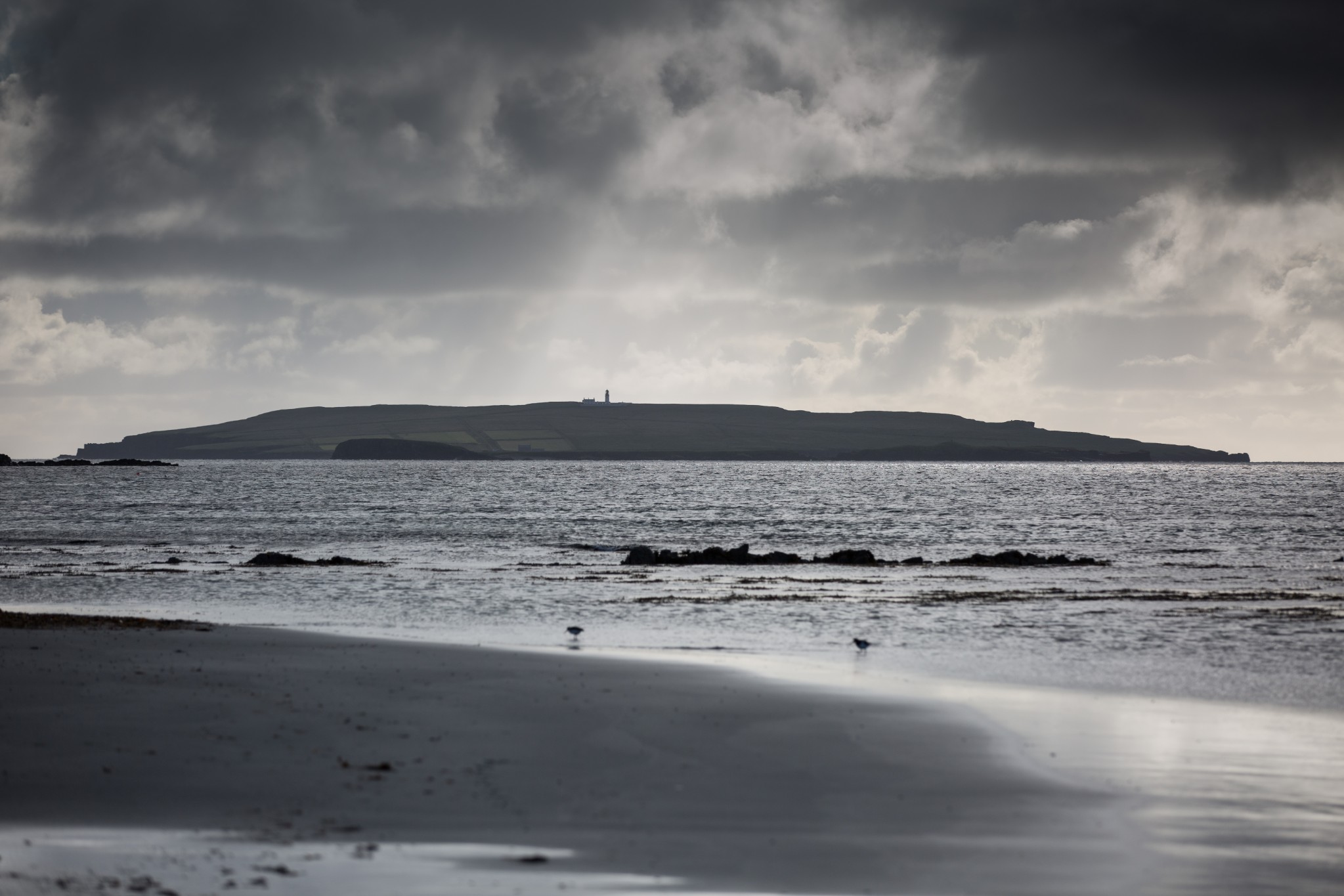Our latest 'Introducing Orkney's Makers' feature focuses on Orkney-based glass designer, Carrie Paxton.
You were a Graphic Artist before moving into glass - what prompted the change?
Originally, I did an apprenticeship with a company called Oxley Studios in Edinburgh. This was in the mid-70s and all our work was made by hand. We designed and prepared colour separation artwork for printing. You had to make good use of the colour separation as each colour was expensive to print. My next job was running my own studio in a large organisation, preparing artwork for print, designing and also making displays for exhibition. I cornered the market in cutting huge 3D lettered signs. I left to start a family and took some time away from making. Eventually I was accepted at Art College in Edinburgh. I had completed a weekly stained-glass course at Edinburgh Stained Glass House - you were supposed to make a glass panel over the term but I was so hooked on the making I turned up with the completed piece each week. I was very fortunate to be asked back to do my post-graduate diploma in design. I loved my time at college.
Does that early experience as a graphic artist translate into the work you do now with glass?
I still carry the sensibilities of using limited colours in my work from my early years of colour separation. I would do much more with black and one other colour if I could, but folk expect something more colourful from glass. I only work with clear glass with applied frits (ground glass) enamels, lustres and silver stain. There are no particular restraints in the process of making my designs, I use clear glass like a blank piece of paper, I put the constraint there. I don’t work with manufactured coloured glass. The detail is applied in the last firing so any shading would need to be fired first.
Have you always been creative – is it something that was part of your childhood?
Yes, absolutely. We were very much a makey-dooy family. My mother was a photographer and came up from Yorkshire to run a studio in Edinburgh. My father, the eldest of five, survived a childhood illness and lived with a physical disability. He believed you could do what you want if you tried hard enough. There was no limit to materials or restrictions with what you could create. The only discipline was we were not allowed to say we were bored. There was always something you could invent. My mother made everything I wore and my father created so many items from his bible, The Readers Digest Repair Manual. My home life was ordinary but quite unusual in the freedom. I was encouraged to explore. My adult children are also very inventive and I think we all feel very fortunate to work in the creative industry. There are many lows but the highs are intoxicating.
You moved to Orkney in 2016 - how has that influenced the work you produce?
Friends said before I moved here that my work would change and although I agreed, I couldn't predict what direction it would take. Since moving here my work has slowly changed. There are some pieces I do make many, many multiples of for my Orkney outlets, but I also sell from my studio now. This is new for me - I‘ve never sold directly to the public. Folk pop in for a look around and I’m getting used to it. I experiment much more than I could before and go off on tangents that often come to nothing, but sometimes they work and have legs and develop into things I love. I have a collaborator here now who make wooden bases for my lights. He makes my ideas work. I have always wanted to make functional items and my lighting range is as close as I have ever been to this idea.
In your depictions of landscape, it is often the foreground detail that takes centre stage. Is that generally what takes your attention within any scene?
Landscape is not my chosen subject; I have never been good at depicting it. This is new to me and developed from a design collection of weeds which I continue to enjoy. When we used to go out in groups to draw and paint we went to different places including the Botanical Gardens, Leith docks and Tynningham Beach. I just couldn’t work out how to start with landscapes, so while everyone else seemed to be scribbling down their observations, I would zone in on a flower or a shell or more commonly my colleagues and chums. I like drawing people most of all. So, I focus on the foreground and make up a simplified background often adding an outline of Swona or Copinsay, because Swona is special to me and Copinsay I can see from my studio.
Your collection features a varied range. What are the main categories that your products fall into?
The most popular design is the Ring of Brodgar. I make this design in lots of different shapes and sizes. I developed a range of mini curves for the Ness of Brodgar dig three years ago and these are very successful. I like to support the dig and they support me by selling my product. This design is by far the most popular with locals and visitors. Anything with an Orkney connection sells well. I’m inspired by my surroundings and the historical heritage but more by people’s homes, old and new, crumbling and abandoned. People and past lives and my own ancestry here in Orkney interest me a great deal. Much of my work is rooted in my personal nostalgia around ‘home’. I also experiment a lot. My mind is cluttered with new designs and methods I want to try.
It’s such a difficult time for everyone at the moment, and very unsettling for the creative sector. How are you getting by – is there anything in particular that helps you stay positive?
It took a few weeks to adjust to the new situation, but I am naturally a proactive type and have to look for an opportunity. I re-assessed my website which was functioning but had had no attention for…ever! I reduced lots of old stock, deleted pieces that I didn’t like, added new pieces and redid some of the photographs. I’m still upgrading it now. I also increased my presence on social media and anything else I could think of. None of these jobs are enjoyable for me but I have found it has worked. I have delivered orders locally, added greeting cards to gifts sent directly and have had much longer, chatty emails from customers. I’ve read the advice about boosting your online sales, including the benefits of a personal connection between makers and buyers, and it’s really true. Many customers have bought from me online as they actively do want to support independent makers. It is really a lovely outcome to the situation.
I love making my glass and would be making it whether or not there’s a pandemic going on or anyone was going to buy it. Like everyone, I don’t know what will happen in the future for businesses like mine but I have faith that we will survive this period and folk will still want to own something original, handmade and from Orkney. Visitors will be back in Orkney as soon as they are able to. The pull to return to Orkney is too strong to resist!
Find out more about Carrie Paxton Design via the official website.
Shop online for Orkney crafts products.
The Promoting Orkney project has been part financed by the Scottish Government and the European Community Orkney LEADER 2014-2020

